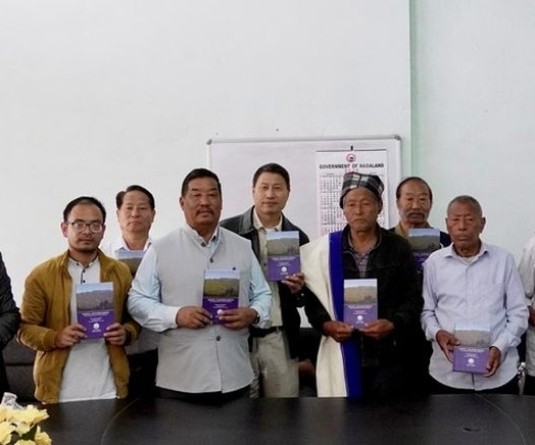
• Includes retired as well as serving officials
• Prelim inquiry detects sub-standard work, over Rs. 3.6 crore defrauded
Morung Express News
Dimapur | June 20
The Central Bureau of Investigation (CBI) has filed an FIR in connection with the allegation of fund misappropriation in the construction of the Nagaland High Court (HC) complex in Kohima.
The CBI, in its FIR uploaded on its website, named as many as 14 individuals, including 10 officials of the Nagaland Public Works Department (PWD) and four civil contractors involved in the construction of the long delayed HC complex, the foundation for which was laid in 2007 in Meriema, Kohima.
The names of the officials, as listed in the FIR, are K. Nikato Assumi, Executive Engineer (Housing); Rukongutuo Suoho, Executive Engineer (Electrical Division); Vekhu Swuro, Executive Engineer (Rtd), N. Kikheto Swu, Executive Engineer (Rtd), Kelechuto Pienyu, Executive Engineer; Tonzuk Ao, SDO (H), Hutokha, SDO; Nimo Kath, SDO; Yapang Jamir, Junior Engineer and Mhasivilie Savino, Junior Engineer.
While the CBI listed Rukongutuo Suoho as an official of the PWD, it should be noted that his parent department is the Department of Power, Nagaland.
The contractors’ names were listed as Vilelie Khamo, proprietor of M/s Vilelie Khamo; Avitue Sekhose, proprietor of M/s Khedi Trade and Development Agency (a sister concern of M/s KLAS Enterprise; Beinyu Miachieo, proprietor of M/s Oking Electrical and Thepfusatuo, Managing Director of M/s Hexzad Syndicate.
The FIR was filed on June 17 under IPC sections 120B, 420 and the Prevention of Corruption Act, 1988 in the Imphal branch of the CBI. Criminal conspiracy, cheating and criminal misconduct by public servant were listed as the suspected offences.
The filing of the FIR can be traced back to 2017 when the Nagaland Tribes Council (NTC) filed RTI application seeking information about the project. The NTC, through a press release issued on September 12, 2017, stated that the RTI replies pointed to incommensurate execution of work as opposed to the expenses incurred. As per the RTI information, it said that funds amounting to Rs. 52.63cr were drawn as against the original estimate of Rs. 43cr, while “only 35% was achieved on the ground.”
It landed in the Gauhati High Court court in the form of a PIL (suo moto). The Nagaland Chief Secretary and the Departments of Finance, Planning, Law & Justice and the PWD were listed as the respondents in the PIL.
The Court subsequently issued an order on May 2, 2018, directing the CBI to conduct a “Preliminary Inquiry into the allegations of misappropriation of public money” and submit a report within three months.
It added, “…if the Central Bureau of Investigation is of the view that there is any material to support the allegations, it will take action as per law by registering First Information Report etc and the State Government shall fully cooperate with the investigation.”
The Nagaland State Government was further directed to expedite the construction of the new High Court complex.
The CBI, in its June 17 FIR, stated that the preliminary inquiry revealed that the Nagaland PWD was the executing agency and the Department of Law & Justice the “user department.” It cited anomalies in accounts and stated that the “accused engineers of Nagaland PWD in Criminal Conspiracy with each other and also with the accused contractors” defrauded Rs. 3,61,72,552 (three crore, sixty one lakh, seventy two thousand, five hundred and fifty two).
The scope of the work included the main building, approach road, perimeter fencing and other ancillary works, which were outsourced to private contractors.
It said that inspection of the approach road from NH 61 to the main HC building revealed it was short of the specifications by 300m in length and short by 1m in width. It added that concrete strength test indicated 22 percent substandard work on the pillars and 10 percent substandard work on the slabs of the main building, as per the “IS specification.”
The inquiry also revealed instances of payments to a different entity as opposed to the firm originally contracted, missing tender documents, missing electrical components, suspicious signatures etc.




